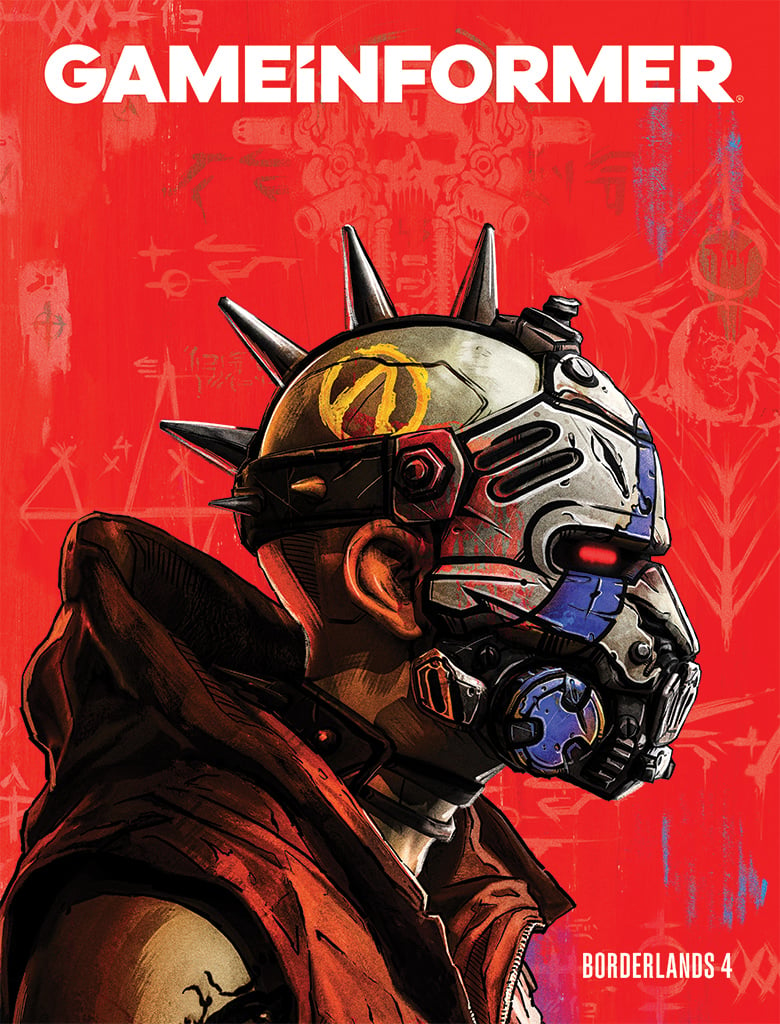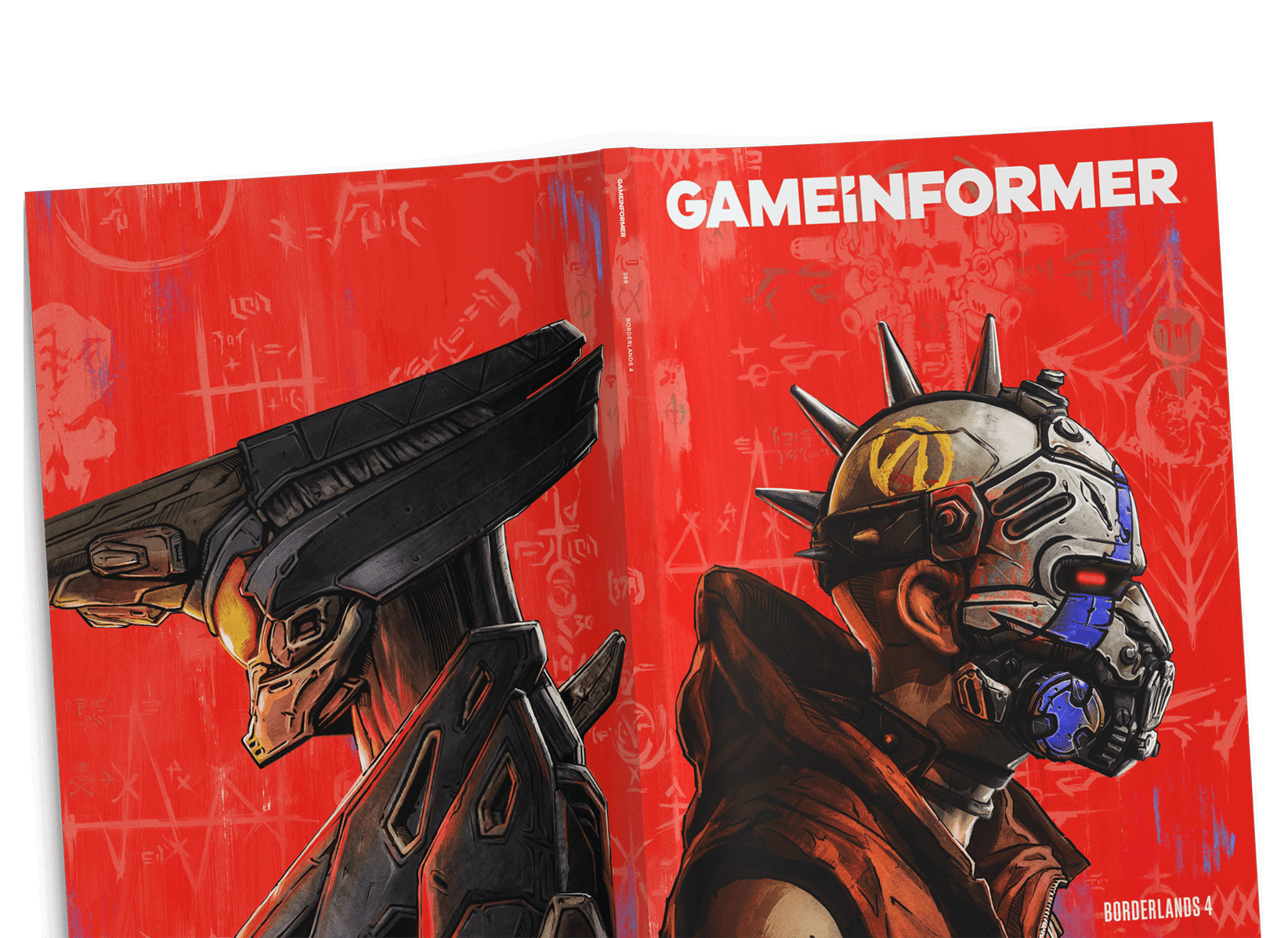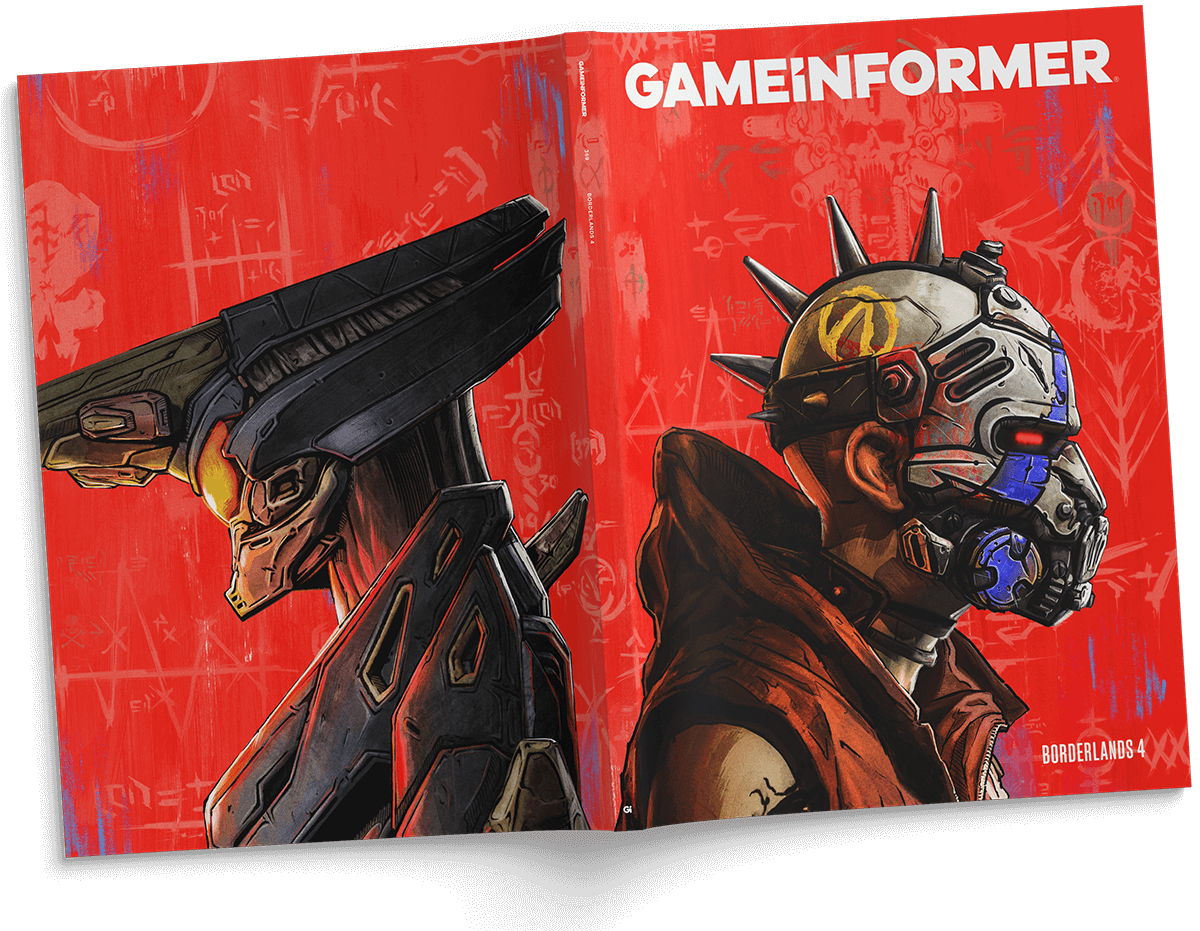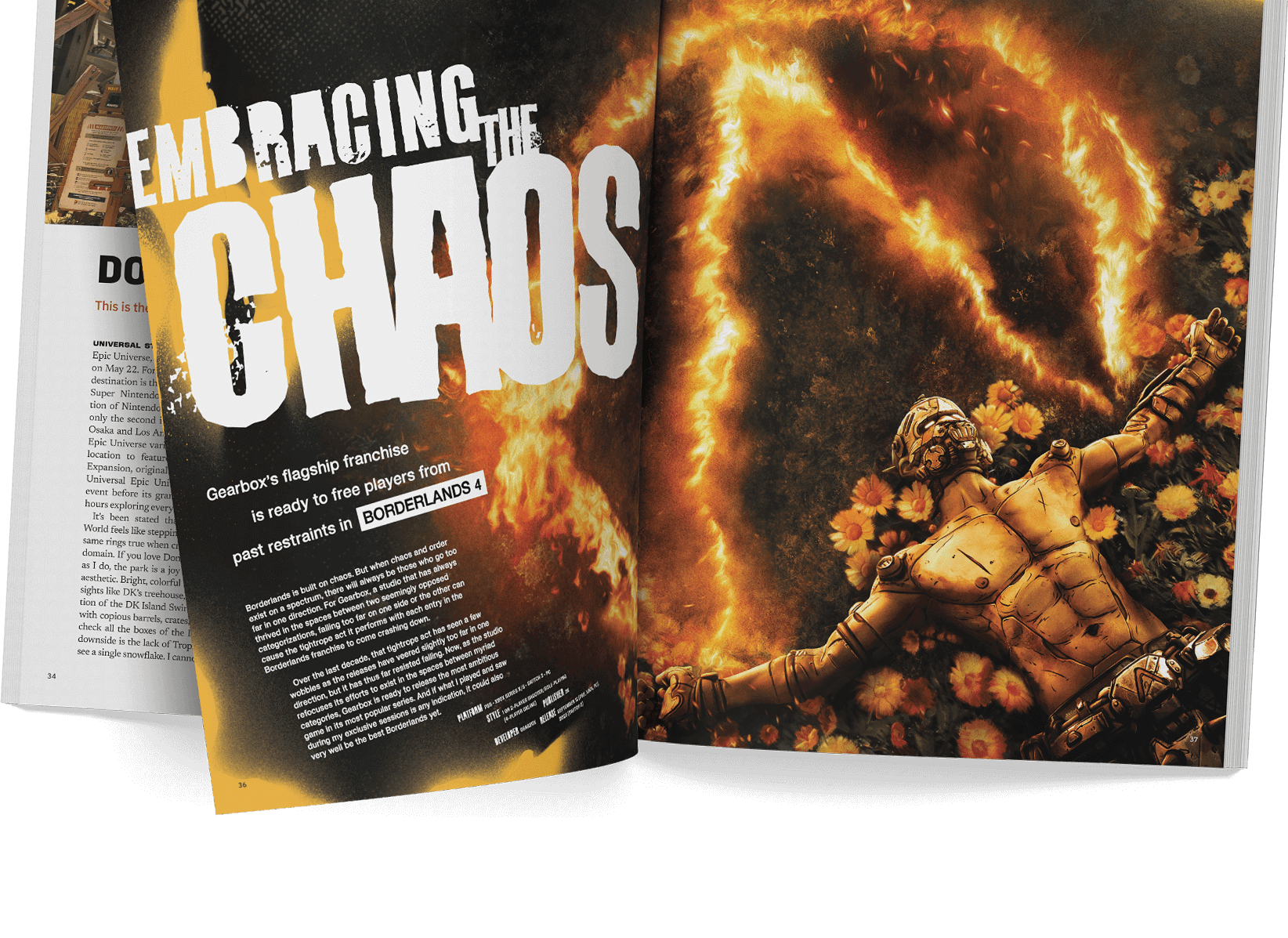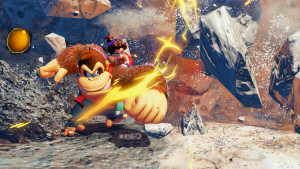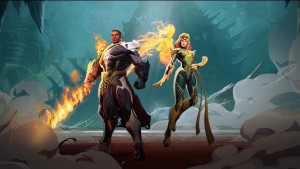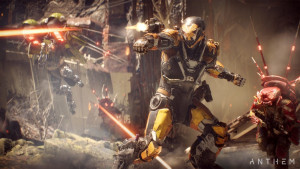Holiday Weekend Flash Sale on Our Magazine! Subscribe Now
Dragon Age: Inquisition
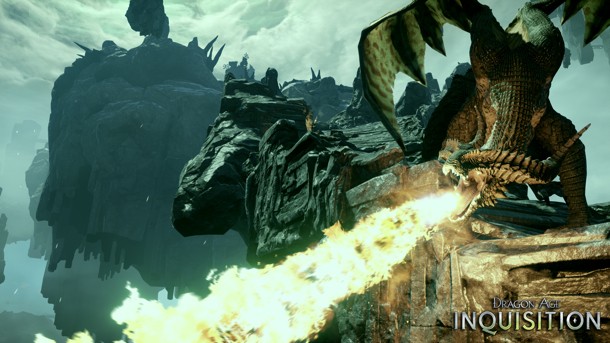
I killed a dragon. It wasn’t easy, even with the Dragon Age: Inquisition demo set to “Nope. We won’t kill you.” I’m sure if I could perish, I would have died from the burns, or the claws, or getting thrown by the giant beast’s wing sweep. None of that matters right now though, because I killed a dragon.
In preparation for my preview yesterday, I spent most of my recent vacation playing Dragon Age II (after a quick refresher of the combat and basic mechanics of Dragon Age: Origins). Like many of you, I am finding the sequel to be a full pendulum swing away from what shone brightest in Origins.
It’s with that understanding that I am happy to report that BioWare seems to have found a smart middle ground. Dragon Age: Inquisition’s combat blends the tactical mastery required in Dragon Age: Origins with the tactile and responsive action introduced in Dragon Age II.
This thread of balance carries through most of what I played along with smart improvements to the series throughout. I had the opportunity to speak with creative director Mike Laidlaw (whom you heard in the Hinterlands post-E3 video) as I was playing, and got an inside look at some of the design decisions you’ll experience on October 7.
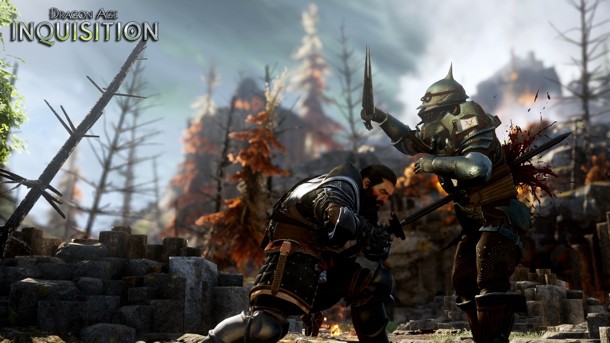
On Combat
The controls have been overhauled to fit the blended approach with this third installment. The tactical camera is handled with a toggle of the back button (on the Xbox 360 controller we were using for our PC demo). From there, I was able to freely move around the area (in three dimensions - the camera isn’t fixed to a specific altitude), cycle through each of the characters to move them or choose from one of eight different quick abilities (up from six in the previous two games), and plan for the fight ahead.
Unlike previous BioWare games, which require you to either queue abilities or play in real time, Inquisition offers a third option. By pressing the right trigger in tactical view, you enter what Laidlaw calls “engage mode.” This slowly winds the action ahead and can be immediately stopped by letting go of the trigger.
The benefit is more precise timing of abilities to maximize synergistic effects. For example, triggering Blizzard (a spell that swirls biting snow across an area as menacing clouds gather above) has a chance of freezing enemies in place. Slowly progressing the action will let you know if a fellow mage should use Stone Fist or a warrior should strike with a Heavy Blow, both of which will “shatter” a frozen enemy for additional damage.
I found myself entering tactical mode more than any other BioWare game I’ve played, largely because of the combined flexibility of the camera and engage mode. That’s not to say that playing things out in real-time isn’t fun or useful. Rather, using both at the appropriate time is far more intuitive in Inquisition.
Encountering two Templars might not require much tactical maneuvering, but stumbling into a fight between them and mages (and drawing the ire of both factions) might convince you to take a breather and think things through. And should one of your party members fall on the battlefield mid-skirmish, any character will be able to help the teammate up.
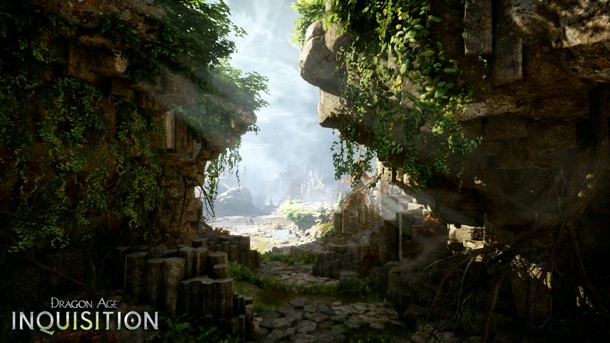
On Crafting
While combat is the most obvious of changes in Inquisition, other systems see overhaul also. Crafting has been revamped and reinforced. Resource management is another balance between Origins and its immediate sequel.
Each plant you pick, ore you mine, or hide you skin from a hunt counts as one unit (unlike Dragon Age II’s infinite resources). The plants will grow back over time, and even if you hunt an animal until its population in the region is low, they’ll come back. Like in Dragon Age II, you won’t be mixing potions mid-battle. You order them from merchants, as you did on your last trip to Thedas.
For the first time, you can craft armor for you and your companions (who can be fully outfitted once again). Each recipe you find can be used multiple times with better materials. For instance, a leather version of a cuirass might look similar to one made of drakeskin, but the latter will be significantly more durable. Laidlaw tells us that the recipe results will be improved by a multiplier determined by the material.
(Read on to find out how you'll move the plot forward and what happens after the E3 demo.)
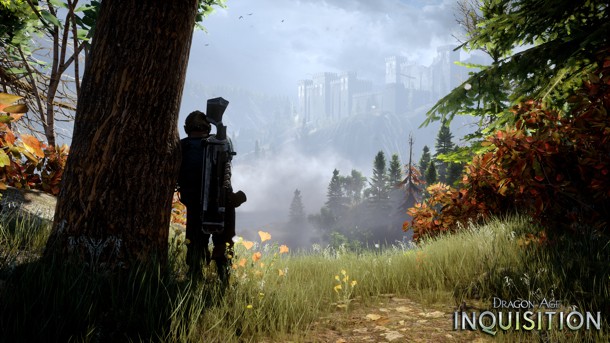
On Exploration
The area we explored, The Hinterlands, is enormous. Laidlaw tells me that were you to compress all of Dragon Age: Origins’ playable area, it would fit inside this zone. He calls the approach “multi-region open world.” It’s not quite Skyrim’s seamlessly connected outdoor areas, however, Dragon Age: Inquisition’s regions are massive.
To help you navigate them, players can set their own waypoints on the map. You’ll also be able to collect and ride mounts to help you traverse them more quickly. A fast-travel system is in place that will allow you to hop to any previously discovered camp, too.
I noticed that the telltale shimmer that denoted lootables in the first two Dragon Age titles is gone. In its place is a pulse-like search feature. This adds a bit more complexity to some of the quests requiring you to find an item in the world.
Laidlaw says that in those instances, you’ll see a bounded area on the minimap when you get close. Once there, you’ll need to press the right thumbstick to “ping” the area, which will reveal lootables in your immediate vicinity. You can use this feature anywhere in the world to reveal crafting items and corpses with items on them.
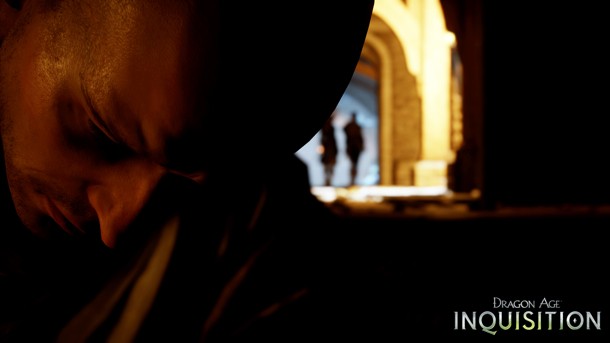
On NPC and Inquisition Interactions
If you’ve ever played a BioWare game, you’ve likely experienced the sudden cutscenes that play out as you near an NPC with a mission for you. Those are largely gone.
Instead, side quest conversations must be actively engaged. As you near an NPC who wants your attention, you’ll hear them call out for you. A semi-transparent dialog wheel will appear at the bottom of the screen, and you can choose to have the conversation (by clicking in the right thumbstick) or moving on. Once you begin the conversation by picking a dialog option, the conversation plays out.
As for the Inquisition, as any leader knows, it’s not all murdering bandits and killing demons. The War Table is where you spend the “power” you’ve earned by accomplishing deeds in the world. Killing a dragon, finishing a quest, liberating a civilian area, and many other things earn you this currency.
It’s used to task the Inquisition to patrol areas, deploy agents, raid castles, and establish camps. More importantly, it’s the means by which the story is progressed in the open world.
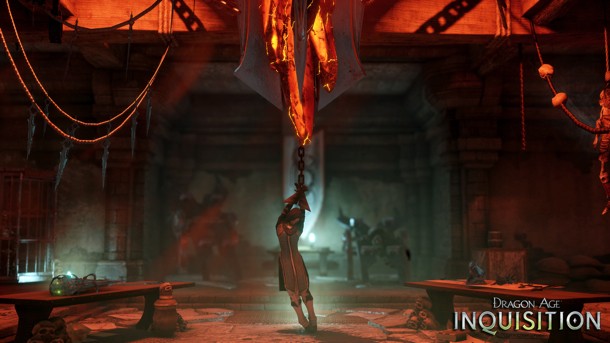
Beyond the E3 Demo
If you happened to watch Mike Laidlaw’s video walkthrough of the E3 demo, you’ll note that things wrap up shortly after the fight with the Ferelden Frostback dragon. We took things a bit further in our hands-on time.
We wrapped up with a raid on Redcliffe Castle, currently a mage stronghold. We’ve sent in agents in advance, including Leilana, who serves as the Inquisition’s spymaster. In Dragon Age: Origins, Leilana was deadly, but she had a soft side (one that you’ll be able to hear more about if she was your Grey Warden’s lover).
In Inquisition, she seems hard and cold. Life has clearly dealt her a rough hand, evidenced by her harsh demeanor when rescued from torture.
As we continue through the castle, we encounter pockets of resistance. Sneaking up on one card overlooking a great room, we find another use for our Stone Fist spell, sending the goon hurtling over the side.
After making quick work of this group of six (thanks to a well placed wall of fire and some area of effect spells), we finally reach the throne room. There, we find the cult leader, known to recently announced mage Dorian.
A multi-stage battle caps the experience, with rifts opening up as demons flood the room while our main target takes a rest. Rifts are powered by the demons that come through, and the only way to close it is to defeat the monsters.
We’re ultimately victorious, but it’s too late. The doors fly open and demons storm through.
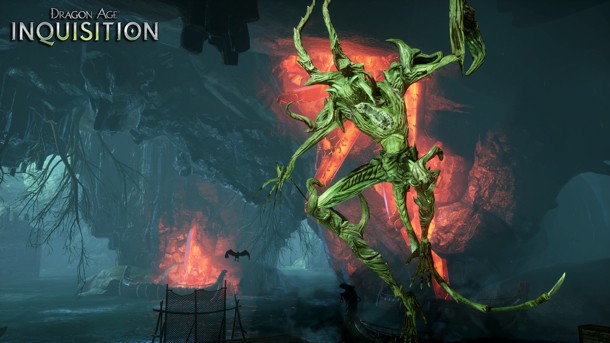
I’m far more interested in Dragon Age: Inquisition than I was prior to getting hands-on time. The game feels more cohesive in its design than either of the other two titles. The combat smartly blends the satisfaction of strategy with the tactile feedback of being fully in control during real-time skirmishes.
For more, be sure to check out our E3 preview. You can also read up on the game in our coverage from the September 2013 issue. Dragon Age: Inquisition is out on October 7 for Xbox One, Xbox 360, PlayStation 4, PlayStation 3, and PC.
